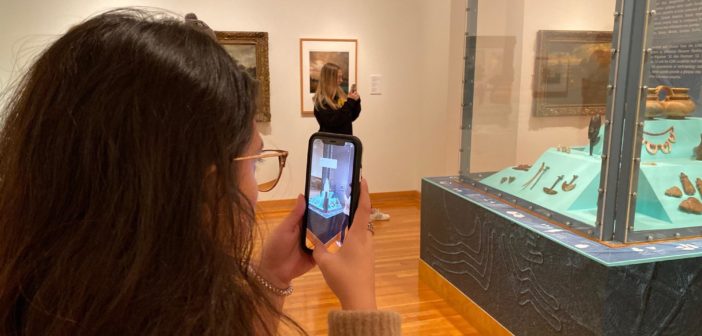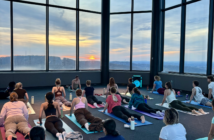Lehigh students and faculty have been increasingly incorporating augmented and virtual reality into university curriculum.
The Franklin Institute defines AR as a technological feature that adds digital elements to a live view. Examples of this are Snapchat photo lenses and the app Pokemon Go.
VR, however, creates a complete immersion experience that removes users from the physical world.
Lehigh’s Center for Innovation in Teaching and Learning (CITL) holds various events with speakers such as Kevin Park, a guest speaker from New York University. The CITL provides students to come and discuss anything AR or VR related.
Stephen Sakasitz, a senior instructional technologist for Lehigh’s Technological Services works directly in the CITL and is considered the point person for all AR and VR support.
Sakasitz said AR and VR emerged as a part of Lehigh’s campus approximately three years ago. Around two years ago, the visualization lab was added to the CITL.
Sakasitz said he sees two different areas in which AR and VR will be prevalent on Lehigh’s campus.
“One is used directly in the classroom as a teaching and learning tool AR and VR applications that currently exist are out there and how they can be utilized better to improve the teaching and learning experience,” Sakasitz said. “The other kind of way that it’s going is homegrown development of AR and VR resources and how those can be used either in the field of research or academia in general.”
Over winter break, the CITL plans to work to set up a collaborative, student-focused development space located in the basement of the computing center.
Sakasitz said the hope is the development lab will be a space where students who have an interest in developing 2D, 3D, VR, AR or any kind of immersive technology will be able to access that space, collaborate with other students, mentor one another and more.
Ved Patel, ‘19, a student who works with AR and VR in the CITL, said he sees the technology being prominent in the future of education.
“I feel AR and VR are the next big thing in technology; the major application area would be education. I think we should be moving away from the traditional in-class teaching methods.”
Patel says the applications for AR and VR are set up for people to use at the CITL. He helps students effectively use AR and VR for their courses.
Many professors have given assignments where their students are asked to use AR and VR technology to better understand and visualize concepts from class.
William Crow, the director of the Lehigh University Art Galleries (LUAG) and a professor of practice in the department of art, architecture and design, had his students utilize AR technology to create games that apply material they had learned throughout the semester.
“We covered a lot of material, and students were then asked to apply what they had learned by creating a game using augmented reality,” Crow said. “Research tells us that when someone applies what they learned and utilizes that information in another context they are much more likely to retain it and to incorporate it into their own understanding.”
Crow’s students will be presenting their AR games on Dec. 5 in the Lower Gallery of the LUAG.






Comment policy
Comments posted to The Brown and White website are reviewed by a moderator before being approved. Incendiary speech or harassing language, including comments targeted at individuals, may be deemed unacceptable and not published. Spam and other soliciting will also be declined.
The Brown and White also reserves the right to not publish entirely anonymous comments.